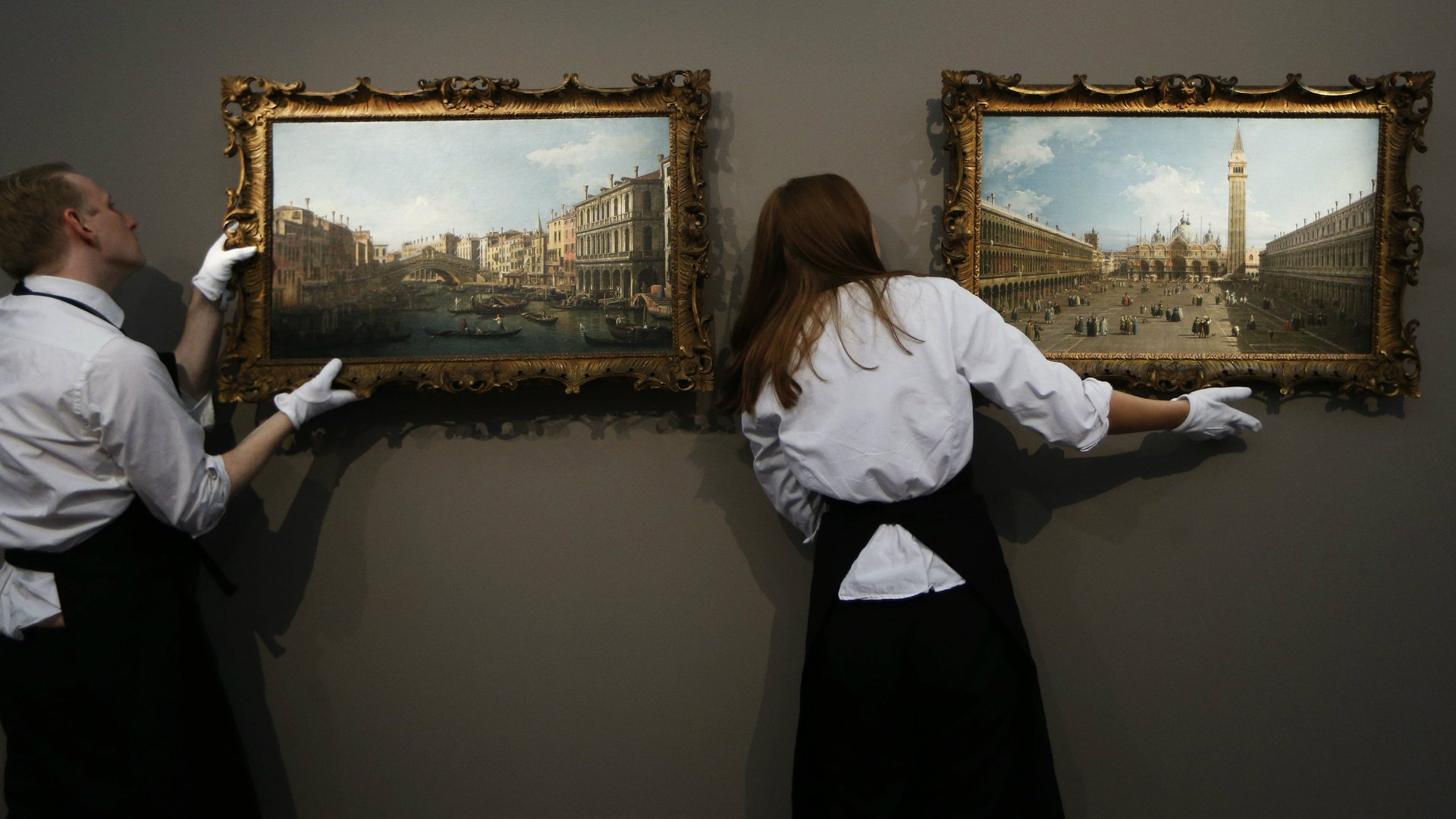Will a Titian painting from the 1560s beat Salvator Mundi’s $450m hype?
The art world has been abuzz for weeks over the sale of Leonard da Vinci’s “Salvator Mundi” for $450.3 million. The painting—which is the most expensive piece of art ever sold at auction—will hang in the new branch of the Louvre, in Abu Dhabi.


The art world has been abuzz for weeks over the sale of Leonard da Vinci’s “Salvator Mundi” for $450.3 million. The painting—which is the most expensive piece of art ever sold at auction—will hang in the new branch of the Louvre, in Abu Dhabi.
Interestingly, “The last da Vinci,” as the painting has been called, has something in common with another piece of Old Masters art set to be sold at Sotheby’s early next year. “Saint Margaret,” painted by Titian and his workshop, and Salvator Mundi were both once owned by King Charles I, who Christie’s calls “the greatest picture collector of his age.”
This is significant because it means that there are apparent records of what both paintings were worth when the King met his untimely end (by decapitation) in 1649. The Financial Times reported that, in an inventory taken after the monarch’s death, Leonardo da Vinci’s work was valued at a mere £30, while the Titian work was approximately three times that, at £100.
This begs the question: Is there any kind of methodology or predictability to the way art appreciates in value? As the FT wryly estimated: “if the same valuation ratio has applied to both paintings through the past four centuries or so, [the Titian] could be worth $1.5bn.” But insiders are estimating that the Titian painting will sell for a paltry $2-3 million—not exactly a stunning price tag for high net worth individuals. So, what gives?
First, says Andrew Goldstein, editor in chief of Artnet.com, there is the obvious fact that Salvator Mundi is a da Vinci and that the art market is anything but stable.
“The general tendency of course is for works of art by canonized historic artists to continually rise in value, driven by increasing scarcity and competition in the marketplace, but there are major differences between artists, and valuations absolutely don’t remain consistent over time,” Goldstein said. “A da Vinci painting will always beat a Titian painting if offered at the same time, no question, if only due to the relative paucity of Leonardo’s paintings and his unique profile in world culture as the paradigmatic Renaissance genius.” In other words, da Vinci paintings basically never come up for auction—and da Vinci himself is like an Old Master rock star who has no comparison.
There are other factors at play, too. Weeks after the da Vinci’s sale, we learned who bought it: a little known Saudi prince. While it’s unclear if he bought it specifically with the intention of allowing Abu Dhabi’s Department of Culture and Tourism to “acquire” it (as the museum phrased it in a tweet), it is still a major coup for the museum and the region at large—one that they may have sought at any price.
“Bottom line the art market is a market,” says William Fleisher CIC, a specialist art insurer and an expert on art valuation. “Want, need, ego, and wealth play a big roll. With the Mundi attraction, everyone knows Leonardo, while a small segment of the world population knew about the museum.” The museum and ultimate buyer were well aware of the potential brand and buzz value of securing the da Vinci, Fleisher adds, “so the value of world exposure and tourism added the push to drive the sale.”
So no, there isn’t much chance that Saint Margaret will come close to The Last da Vinci in terms of sale—but the reason has little to do with the quality of the art itself.